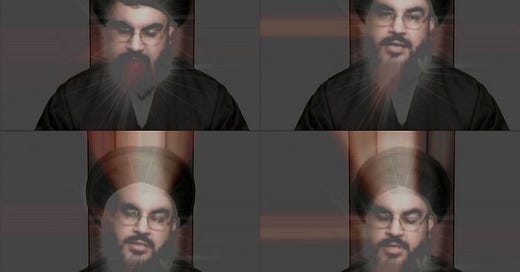Creative Australia - the sum of its parts.
The time has come for us to swallow a taste of our own medicine.
I have watched many, many people share Memo’s Open Letter, and I just wanted to add two thoughts of my own before taking myself and my headache off to bed for the evening.
1. I have felt very uncomfortable about Creative Australia’s decision-making for some time. This is mostly to do with watching art world royalty receive thousands of dollars in government money while simultaneously posting content online celebrating Hamas and Hezbollah. I don’t like Hamas or Hezbollah.
It is for very good reason that neither public nor state discomfort interfere with Creative Australia’s mandate to support artistic excellence and uphold freedom of expression, among much else. I celebrate that neither my own sensibilities, nor the sensibilities of others, hobble this mandate.
So while it pained me deeply to watch Creative Australia bestow grants upon artists who use their professional profiles to chastise, berate, harass and dox other artists for their cultural backgrounds, political views, and many times merely for their silence, I have all the while understood that it is not Creative Australia’s place to play the role of moral arbiter or disciplinarian.
It is deeply disturbing to me that Creative Australia have chosen this particular juncture to break from their professed political and moral agnosticism, be that agnosticism real or by name only.
Creative Australia has a responsibility to platform our artists based on merit and toil. While it may be more a matter of principle than practicality, Creative Australia does not have a responsibility to the politics or tastes or changing moral tides of artists or punters like myself.
2. I have also felt incredibly uncomfortable by the public outcry over Creative Australia’s decision. This might sound rich given the outcry you just read, but bear with me.
Censorship within the arts has been ghastly. It has been artists themselves, and not Creative Australia, who have mobilised into torch and pitchfork wielding witch-hunts against each other over the past years.
It strikes me as both suspicious and hypocritical that while bullying and vilification within the arts is often heralded as a testament to some higher-moral drive or vanguard puritanism, that Creative Australia’s decision is being reviled — by those within the arts — as some terrifying affront to the arts’ non-existent regard for tolerance, respect, and pluralism.
Isiah Berlin’s ‘Two Concepts of Liberty’ (1958) provides a timely reminder for those of us who, like myself, find ourselves caught in the tension between seemingly opposed conceptions of ‘free speech’.
On the one hand, we might all expect to have the freedom to do or say what we like. A libertarian approach. I may insist upon my right to, for example, revere a terrorist organisation or one of their leaders — even paint them, perhaps. I might refuse to sign certain petitions, with the expectation that this refusal may not result in my othering. I may feel that it is important, in principle; that I be allowed to wear a shirt with a swastika on it, drive without a seatbelt, and give my children names like Indica, Sativa and Bong. I may believe that it is important that nobody impinge upon my right to call for the removal of most Jews from galleries, exhibitions, and studios, for having a different perspective.
On the other hand, we might also expect to have the freedom from falling victim to the potential harmful actions caused by others’ freedoms. I might prefer to live in a country where citizens can’t carry guns, or where vilification is punishable by law. I may demand the freedom from bigotry, and be able to lean upon the protection of Australian law should I be targeted unfairly by someone else’s weaponizing of a free-speech ‘freedom to’ argument.
It appears that artists in Australia are insisting on having the freedom TO censor each other, while demanding that we all have the freedom FROM bodies like Creative Australia exercising a similar right.
As George Brandis so strangely put it, ‘people have the right to be bigots’.





Great article on perceptions of what freedom allows, and what people want it to allow. And highlighting the great shame of artists hunting each other down in such a way.